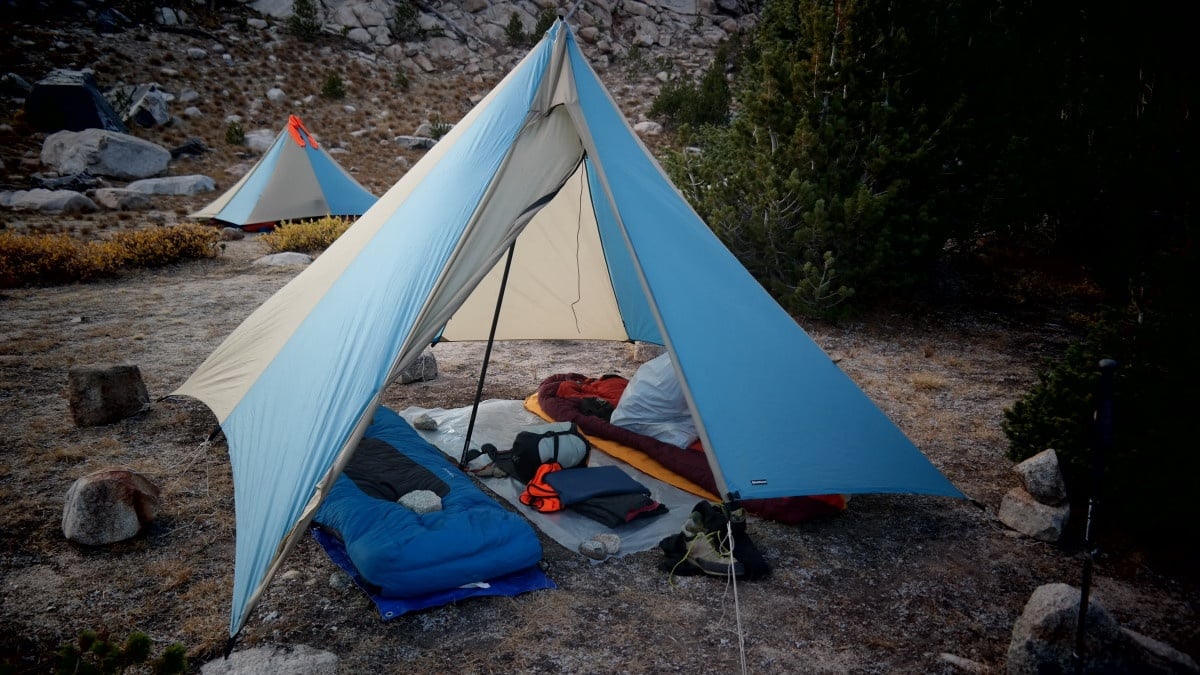
It’s the tenth day of your backpacking trip, and you start to notice that some of your gear is holding up better than others. The cheap new rain pants you bought already have a gash in the thin nylon from venturing off-trail through thick patches of thorny blackberry bushes; yet the old, patched family tent you’ve been using for years is as sturdy and functional as ever. What’s going on here?
Kevin McGowan, the outfitting manager for NOLS Rocky Mountain, knows what it takes for a piece of gear to hold up to the rugged terrain and abrasive elements of the outdoors. Kevin has worked with NOLS both in the gear room and as an instructor since 1978, and he knows how to choose between a piece of gear that will last for years and one that will fall apart quickly on the trail. Besides saving you money, choosing durable gear means you’re conserving natural resources and minimizing your carbon footprint by not constantly replacing your equipment.
Here is Kevin’s simple, time-tested approach to choosing gear that will last for years.
Keep, Repair, Recycle, or Retire?
Decide if you really need that piece of gear. Could you repair an existing piece of gear and use it again? Or repurpose it in another way, such as sewing old tent material into a tote bags? If you can’t find a use for it, look for product take back programs such as Patagonia’s Worn to Wear. They’ll take your old Patagonia gear or clothing, fix it up, and put it back into production. As a last option, when the item is beyond repair, it might be time to retire the gear.
Simplicity
When purchasing new items, first look at the simplicity of the product: items with fewer moving parts are less likely to fail. A piece of gear that is simply made is easier for you to maintain and repair, like NOLS’ Megamid tents. These tents have minimal zippers, buckles, and poles (only one!), meaning it’s less likely they will break in the first place and that they’re easy to repair if they do.
Durability
You might encounter harsh or unexpected weather when you head to the outdoors, and your gear needs to perform well no matter what. To determine how durable an item is, you can check its materials and get advice from people who’ve had experience with it. How did it hold up on previous trips? What do your friends or online reviews say about the gear? For example, NOLS has used the same type of stove on our courses for the last 20 years because we know they’re durable and reliable.
Flexibility
We’re not talking about stretch here, but rather gear you can use in a variety of situations. At NOLS, for example, we run courses year-round, so we choose gear that we can use in as many weather conditions as possible, from winter ski courses to summer backpacking courses. Plus, choosing multipurpose gear means fewer items for you to buy overall.
Warranty
An underlying factor in the process of choosing gear is the vendor's warranty policy. The longer the warranty, the better. Choosing a vendor that will repair your gear for a reasonable price once your warranty expires means you can make that piece of gear last longer.
Cost
There is a sweet spot in terms of a reasonable investment in a piece of gear and the amount of time you use it. Cheaper gear in the moment often equates to buying more gear in the future as the lower-quality materials wear out. When we’re choosing backpacks for NOLS courses, we invest a little more money in packs that are well made because they’re built to last.
Find gear you can keep forever at the NOLS Store. (*Discount available for outdoor organizations, check with nols_store@nols.edu.)



